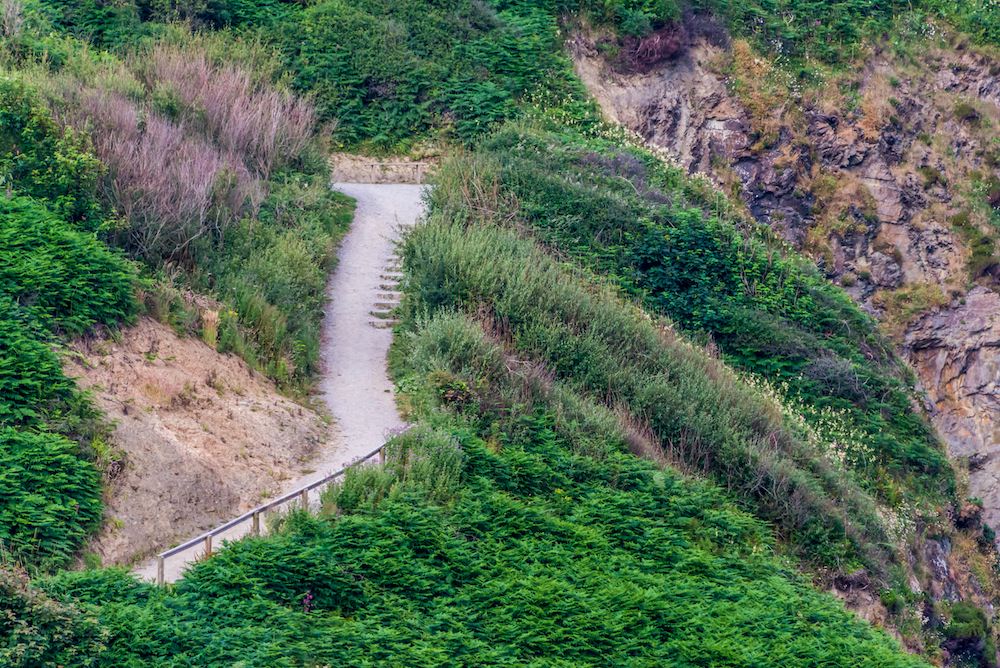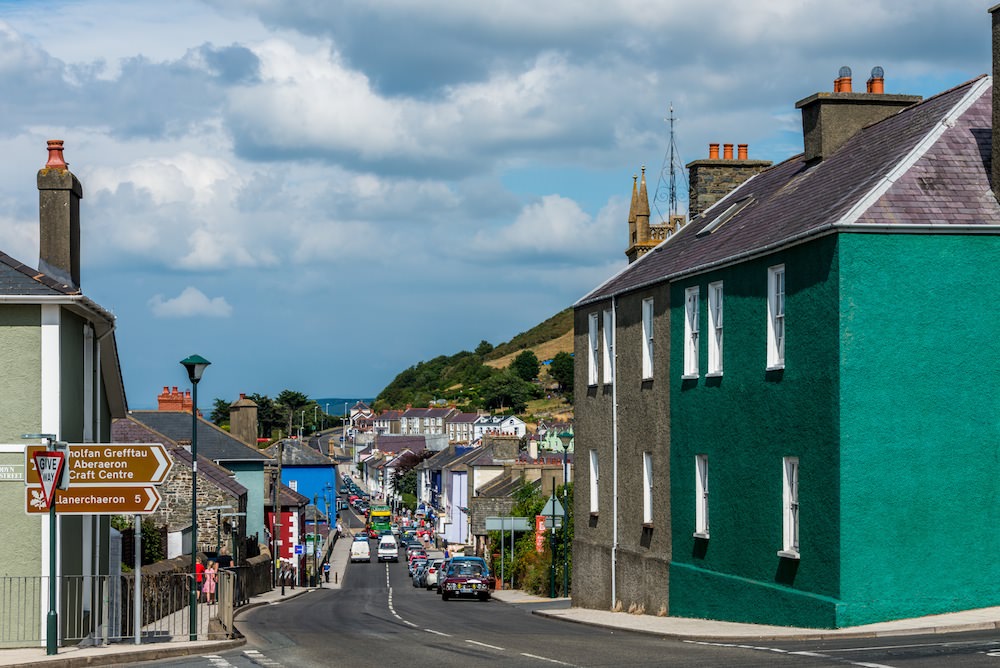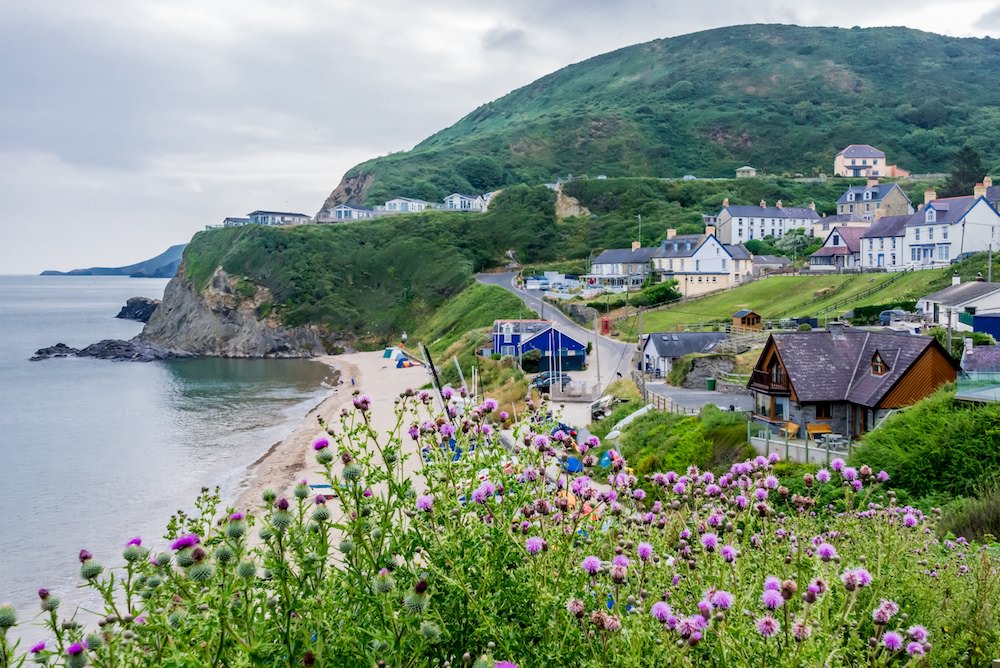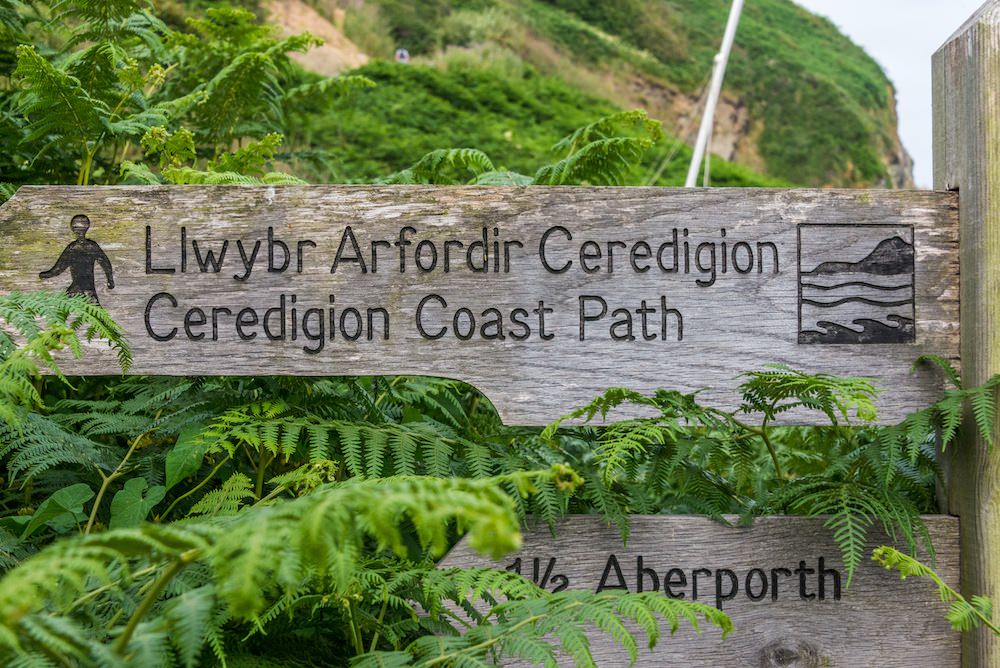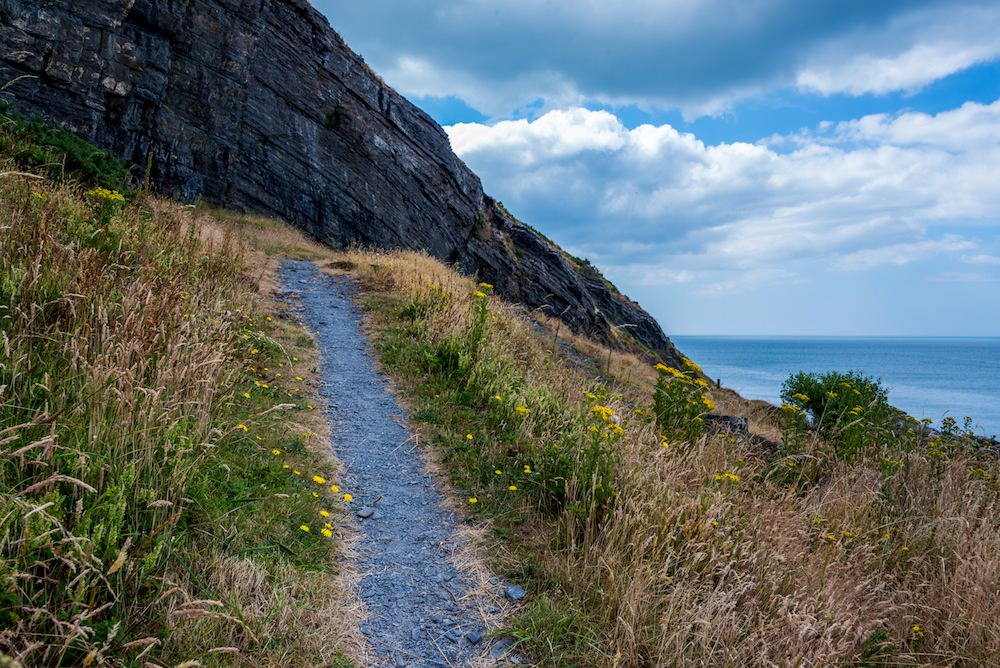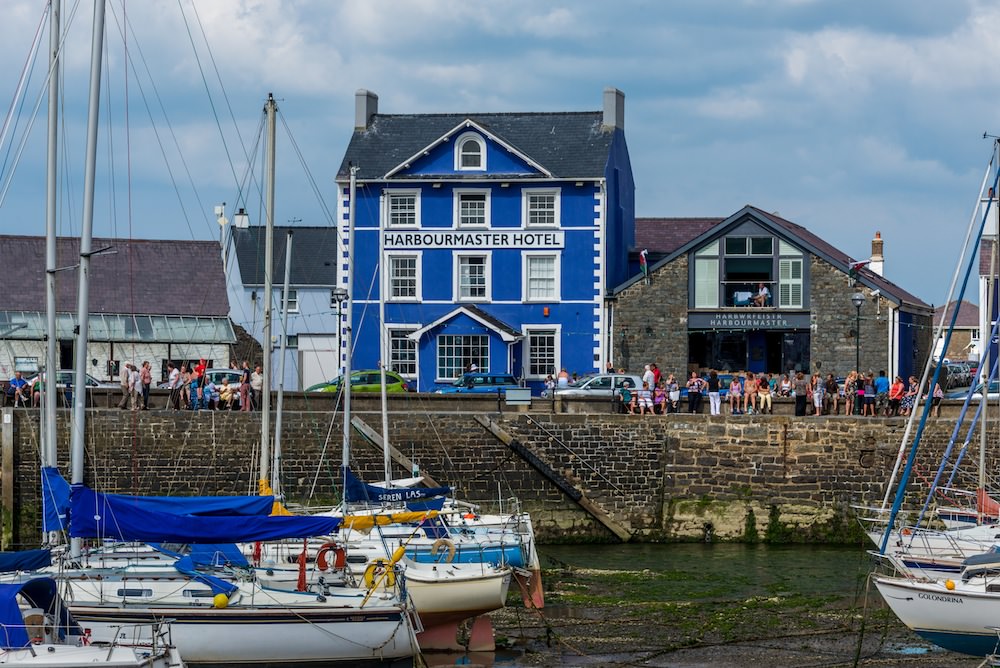Wales has for long played second fiddle to England’s moors and fells as a destination for the UK’s trail walkers, but it now offers a unique path that puts it squarely near the top of the trail walking bucket list. The 870-mile long Wales Coast Path (WCP), completed in May 2012, offers the longest continuous coastal path around any country in the world—and it’s nirvana for hikers and ramblers.
I’ve just got back from exploring the WCP and reveled in its diverse panoramas and gorgeous trails, many of which will bring even the most hardened trail walker to a complete stop with their superb “wow” vistas. Visiting the trail at several coastal points we marveled at the rugged cliff tops, and estuaries and fenlands where huge flocks of birds rose, squawking at our approach.
We saw splashing waterfalls and walked through tiny, pastel painted fishing villages that smelled of salt and sea air. We scrunched along exquisite golden sandy beaches and clattered over beaches carpeted with smooth sea-worn stones. And therein lies the beauty of the WCP. With a little homework, you can walk through one of the most stunning and diverse coastal areas in the world.
I met a keen local trail walker who goes by the name of Kevin Moran early one morning as he emerged from the damp mist, at the tiny seaside village of Tresaith. He regularly walks (and sometimes jogs) the Wales Coast Path from Aberaeron to Cardigan. This section takes in New Quay, Cwmtydu, Llangrannog, Tresaith, Aberporth, Mwnt, and Poppit. Moran’s favorite section runs from Llangrannog through Penbryn to Tresaith, with its boulders, steep-sided valleys and beautiful wooded areas. A little further along, he tells me, the section through Aberporth offers spectacular cliff top views of the Ceredigion coastline. “The scenery and wildlife is amazing, with waterfalls and wild ponies, and looking out over the Peregrine falcons flying below you in a valley”, Moran tells me. Along the more remote stretches of coast you’re likely to see orcas, fin whales, seals and porpoises jumping and swimming sleekly through the water.
The WCP offers terrain for all levels, from the superfit 10-miles-a-day trail walker, to the 3-mile rambler. With some research you can find a wide variety of countryside, ranging from flat and easy to hilly and hard, while scarcely seeing another person. Says Moran, “The coast path offers lots of scenic and ever changing terrain. Steep cliffs, narrow winding sections, boulders, wooded areas, long open cliff tops and plenty of Welsh mud down in the bottom of the valleys”. And it’s not difficult to navigate the WCP. Well marked with signs, and access paths every 3-5 miles, it’s hard to get lost. Says Moran, “The path I use is well trodden and I often meet groups of walkers whilst out on the trail, but generally it’s beautifully quiet and it’s just me and the world”.
The Welsh Government in partnership with the Countryside Council for Wales, sixteen local authorities, and two National Parks developed the WCP. Funding, to the tune of GBP2 million per year, comes from the Welsh Government and the coastal authorities, plus GBP4 million from the European Regional Development Fund. So many miles, so little time! How does one plan a trip to take in parts of a trail that runs from Queensferry in the North Wales Borderlands to Chepstow in the far Southeast? Easy. To help walkers (and runners) plan their excursion, the Wales Coast Path Organization has divided the path into eight sections, and prepared a helpful series of eight brochures that describe each section in fine detail. Here’s a primer on the eight WCP sections to help you choose your running swath of the WCP, with their main highlights.
1. North Wales Coast & Dee Estuary: This part is known for its wonderful sandy beaches, family friendly towns and villages. The path runs along an upland stretch through the foothills of the Carneddau Mountains where you pass through routes dotted with mystical stone circles and medieval settlements and bygone communities. The famed Conwy Castle, a World Heritage Site, dating from 1283, and its enclosed village is the main tourist highlight on this section. It’s easy to spend a day in Conwy, so plan accordingly.
2. Isle of Anglesey: This historic island boasts stunning scenery and wide sandy beaches. Highlights — Beaumaris with its rich Georgian architecture, and views of the Carneddau Mountains.
3. Menai, Llyn & Meirionnydd: This remote region offers the Snowdonia National Park as a natural backdrop. Highlights — Criccieth Castle, the picturesque Black Rock Sands, Morfa Harlech Nature Reserve, and Morfa Dyffryn beach.
4. Ceredigion: Be sure to spend some time in the towns of Aberaeron (Georgian-style seaport with superb pastel shaded houses and upscale eateries), Aberystwyth (resort and shopping centre), Cardigan (historic market town on the River Teifi), Llangrannog (beautiful sheltered beaches, towering headlands), and Tresaith (small fishing town). Cardigan Bay boasts the UK’s largest resident population of bottlenose dolphins, plus grey seals and porpoises.
5. Pembrokeshire: Ranging for 186 miles, the landscape shifts from the rugged cliffs and wave-lashed north coast to the sandy, golden beaches and hidden, sheltered coves of the south where you’ll walk past surfers, windsurfers, and kayakers doing their thing. Highlights — the Medieval town of Newport, the city of St. David’s with its imposing 13th-century cathedral, Jack Sound, the National trust’s Barafundle beach, and Tenby, a bustling, pretty seaside town.
6. Carmarthenshire: Explore the estuaries of Tywai, Taf and Gwendraeth. Highlights — views across Carmarthen Bay, a medieval castle, a pine forest on sand dunes, and various tourist attractions along north shore of Loughor Estuary.
7. Gower & Swansea Bay: An area of contrasts, from the busy seaside city of Swansea to the Gower Peninsula coastline, and several golden beaches.
8. South Wales Coast & Severn Estuary: This varied piece of coastline offers city life, industrial heritage sights, wildlife watching, and spectacular scenery over the Severn Estuary and the Cardiff Bay Trail.
With advance study you can select trails that wind through remote areas, or through bustling cities or small villages that wend their way past ancient castles, and lighthouses—or choose a bit of everything. Despite the daunting length of the trail, many hardy souls have covered the entire coast path from end to end. See the WCP “Hall of Fame”.
What about accommodations on your WCP tour? The Welsh coastline is packed with places to stay, from coastal cottages, hotels, inns, and bed and breakfasts, to romantic lighthouses. See the Wales Coastal Path Accommodations Guide. We stayed at the charming Ship Inn, a little hotel in Tresaith, and thoroughly enjoyed meeting the salty, down-to-earth locals in the bar and restaurant.
And food? Unless you really prefer hard tack and water, seafood is plentiful along the WCP at restaurants and inns. Try the Menal oysters and mussels, Aberdaron crab, cockles, and fresh fish. Meat eaters will enjoy the salt marsh lamb and Welsh black beef. Most trail walkers love the varying terrain and landscapes that the WCP offers in spades. For people wanting to sample Wales’ ever-present beauty and historic sites, and meet her pleasant low-key people, the WCP now offers a good excuse.
Written by and photos by Roy Stevenson for EuropeUpClose.com

